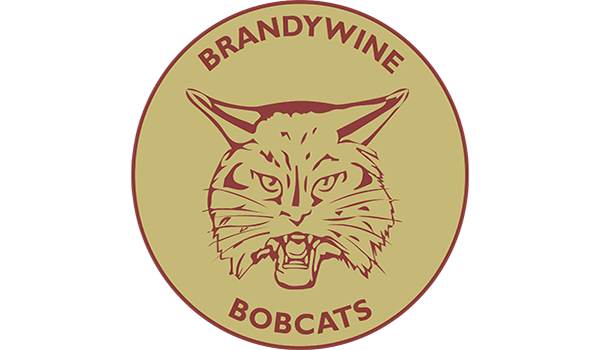Niles explains bond proposal
Published 8:27 am Friday, February 20, 2015
Niles Community Schools has made available a list of frequently asked questions relating to this spring’s bond proposals.
A link to the FAQ document, which contains information on everything from the need for a bond proposal, to its impact on taxpayers, to projects the proposal will pay for, can be found on the district’s website, nilesschools.org, or by clicking here.
“It is very informative,” said Supt. Michael Lindley. “It’s long and there is a lot of information there… nonetheless it addresses a lot of questions people want to know.”
Two bond proposals will appear on the May 5 ballot. Both proposals will generate money in order to make improvements to school buildings and sites, enhance building security and bring technology up to date.
The first proposal is an estimated 2.89 mill increase, which equates to $29.77 million. The second proposal is one mill, which equates to $10.3 million.
The first proposal would cost a taxpayer with a home market value of $100,000 around $144.50 a year, or $12 a month.
The second proposal would cost a taxpayer with a home market value of $100,000 about $50 per year, or $4 per month.
More tables on the proposals’ impact on taxpayers can be found in the FAQ.
The district plans to hold several community engagement sessions about the bond proposals in the coming months, although dates have not been made yet.
“Most of them will be informative meetings that will be set up by the school,” Lindley said.
Lindley said he has not gotten much feedback — either positive or negative — about the bond proposals from the
general public.
“Internally things are positive, but that is like singing to the choir,” he said. “I haven’t heard a lot, maybe a little bit. I haven’t heard any negatives, maybe a little positives, but it is still very early and we are just starting the informational process. I’d hate to say there is a pattern developing in either way at this point.”
What is on the May 5, 2015 ballot?
On May 5, 2015, voters in Niles Community Schools will be asked to consider two bond proposals to improve school buildings and sites, enhance building security for the safety of students and staff, and provide up-to-date technology district-wide. The bond proposals focus on four key areas:
• Safety and Security
• Energy Efficiency
• Technology
• Building and Site Upgrades
Proposal 1 is an estimated 2.89 mill increase equating to $29,770,000. Proposal 2 is an estimated 1.0 mill increase equating to $10,300,000.
These bond proposals allow our school district to close outdated facilities and repurpose others, thus being more fiscally responsible to taxpayers. Students in these buildings will be redistributed to other buildings that can accommodate the added enrollment within their existing building footprint, or additions will be constructed to house the additional students.
• James Ellis students will be relocated to Howard-Ellis Elementary School with an addition. James Ellis will close.
• Oak Manor students will be relocated to Ring Lardner Middle School; Oak Manor becomes an Alternative Education and Adult Education facility.
• Cedar Lane students will be relocated to our Oak Manor facility.
• Westside Administration Center building will close.
What are the major features of this bond proposal?
Safety and Security Upgrades: The safety and security of our students is a top priority for our school district. Safety and security will be integrated into each of our schools by adding emergency lighting, replacing outdated exit signage, adding a modern fire alarm system and creating secure entrances at various schools. Upgraded surveillance cameras and additional card access-systems will be installed as necessary.
Energy Efficiency Upgrades: Reducing energy use is crucial to our operating costs. Replacing single-pane window systems to an insulated window system saves heat loss in the winter and reduces heat gain in the summer. Other energy efficiency upgrades include a new temperature control system and replacement of outdated light fixtures along with installing occupancy sensors.
Technology Upgrades: Technology upgrades throughout our facilities that have been determined by the school district to be necessary to support 21st Century teaching, academic goals, and learning and to ensure our students learn technological and critical skills that are demanded by colleges and employers.
Building / Site / Mechanical / Electrical Upgrades: Due to our aging facilities and sites, improvements are necessary to maintain healthy, safe, and suitable learning environments. Building components, such as HVAC, electrical and other systems beyond their useful life will be improved or replaced. With the installation of new building components, our school district will also be able to rely on new warranties that are associated with various systems. Various site upgrades are necessary to improve poor vehicular, bus and pedestrian areas.
How was this plan developed?
• In September 2014, a professional architectural/engineering team conducted a District Facilities Assessment to review and document all district buildings and to analyze building capacity based on current usage and future enrollment projections. A final report of their findings was completed in mid-October.
• The professional team prepared various master plan options based on their findings and in late October, a community/staff meeting was held to gain feedback. In early
November, the Facilities Assessment Report, master planning options, and community feedback were presented to the Board of Education. A survey was conducted in November to request additional community/staff feedback. Further refinement to the options was completed by the professional team.
• In late November, the Board of Education reviewed a draft Bond Program scope and costs. In December, the Board approved the Bond Program scope and authorized the professional team to proceed with Bond Application documents for State approval.
• The Bond Program was approved by the State in mid-January and the school district will place a Bond Program proposition on the May 5, 2015, ballot.
Why are these improvements necessary?
It is the goal of Niles Community Schools to provide facilities that support 21st Century teaching methods and provide appropriate and comfortable learning environments for our children. The school district is also addressing and reviewing its current and future student enrollment and will align facilities with those needs.
What is the timeline for implementation of these projects?
Improvements can start shortly after approval of the Bond proposal(s). The implementation plan is to focus on the “domino projects” first, starting in 2015. Domino projects are the schools that require additions and/or improvements to allow students from other schools to move to those respective buildings. The goal is to relocate students when construction is complete, allowing students to benefit from the improvements as soon as possible. In addition, the District can close James Ellis Elementary School and Cedar Lane Center sooner, which reallocates operational dollars back into the classrooms.
Schools with a 2015 start time:
• Eastside Connections School / Design Start 2015 / Construction Completion 2016
• Howard Elementary School / Design Start 2015 / Construction Completion 2017
• Oak Manor Alternative & Adult Education / Design Start 2015 / Construction
Completion 2016
• Ring Lardner Middle School / Design Start 2015 / Construction Completion 2017
Schools with a 2016 start time:
• Northside Child Development Center / Design Start 2016 /Construction completion 2017
• Ballard Elementary School / Design Start 2016 / Construction Completion 2017
• Niles High School / Design Start 2016 / Construction Completion 2018
• Southside School / Design Start 2016 / Construction Completion 2017







